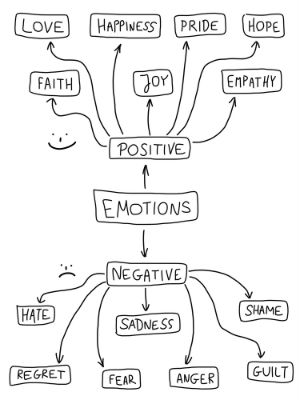We asked our writer to test Watson finds an AI program that analyses a written work’s tone and measures the emotional content of the work. These are his findings.
A lot of writers hate editing their own work it is a sad fact. In my experience there are two reasons editing my own work is no fun. One it’s hard to edit your own work because you’re too close to the topic and have all the built in biases that comes with. Two I edit as I write and by the time a work is finished draft one is technically draft three or so and I may be running low on ways to phrase a topic or sentence.
While current word processor programs can mostly fix my misuse of commas an electronic editor is something I think all writers want if just for the chance to give their own human editors a break. Watsonfinds is an interesting example of an AI based editing program that reads content on its emotional impact on the reader. Using OCEAN as its base this is a unique take on correction software and I’m interested to see what I can coax out of the program.
Sample Text
For the purposes of this exercise, I wrote a simple and kind of bland sample text. My thinking is that I want to get a baseline on how Watsonfinds analyzes work. Something too energetic, jargon-filled, or ‘snappy’ might throw off the results. The following paragraph is about AI, to be specific chatbots.
Chatbots are computer software used to mimic a human conversation. Businesses often used them for customer service purposes. Chatbots can answer basic questions and serve as an interactive FAQ. For a business, a chatbot can be highly useful. When implemented properly they answer basic questions, keep the customer queue down by reducing phone calls or email, and also provide exact answers when a customer may not know how to look up this information on a company’s website. Aside from websites chatbots are also seeing use in toys and cellular phone apps.
The results were as follows:
It is most likely that your content will be perceived with some feeling of Joy, Readers are more likely to pay attention to positive content, so you reasonably want your audience to associate your content with happiness, joy, and positivity. These emotions are ideal for increasing engagement with your brand and message. Your content contains also some feeling of Disgust.
- Joy 23.25%
- Disgust 22.34%
- Anger 19.63%
- Sadness 18.11%
- Fear 15.31%
Given the results, I think I’m moving in the right direction. Of the possible results, the only positive emotion is joy and that’s what I wanted at the top. By comparison anger, sadness, and fear are relatively low. Disgust I find it curious that I got that high a score with that particular emotion. I think that the overly businessy and plain tone may be what’s setting off the AI given that most people don’t like ‘instruction manual’ style writing as a general rule. The result is a kinda blah work that doesn’t really stand out in any key area and has no real emotional resonance.
The Second Try
All in all having a high disgust rating is kind of a bad thing unless you’re going for horror. With that in mind, I’m going to rewrite this to have a bit more energy and talk directly to the reader. If it goes too far into ‘commercial’ I think I’ll leave it as is because I’m more interested to see what the AI ‘thinks’ and I want to get a better idea of what it’s reacting to.
Chatbots are innovative software that talks to you just like a real person. Businesses often use them to provide valuable information and help to customers. Chatbots can answer basic questions about a business and its services. When used in a way that benefits customers chatbots are a valuable addition to any company and make dealing with businesses and professional websites far more convenient. Aside from websites chatbots are also seeing use in innovative toys and the latest cellular phone technology.
The results this time:
It is most likely that your content will be perceived with some feeling of Joy, Readers are more likely to pay attention to positive content, so you reasonably want your audience to associate your content with happiness, joy, and positivity. These emotions are ideal for increasing engagement with your brand and message. Your content contains also some feeling of Sadness.
- Joy 49.61%
- Sadness 21.97%
- Anger 17.91%
- Disgust 12.38%
- Fear 8.91%
I think this proves my theory. A more emotional and humane approach really helped. The AI was able to key in more on an overriding tone and measure the work as very positive. All the negative emotions went down as well. A slight tinge of sadness but I think that is likely due to the style of marketing writing I like to use (problems and solutions as opposed to the relentless positivity other marketers like).

A.I. Analysis
While only getting a surface read I think I get how it’s evaluating my work. The overall evaluation methods seem to be based on tone, word choice, and likely is the work talking to a reader or at them. Tone and word choice play off each other for example decimation is a great word but carries a big emotional hit to the reader and you have to use it (like other heavy words) carefully, however, emotional words can be used to masterful effect when used properly.
Marketing work requires you reach somebody writing that is cold, distant, and businesslike is not going to work. The higher score which involved more direct engagement and emotionally positive words is a better approach if you really want someone to listen. In this respect I have to praise the AI it seems to understand, at least at a base level, how emotional impact from writing works.
Final Thoughts
All in all, I think the Watsonfinds is an interesting tool that checks writing at a deeper level than just typos. Setting out to write something that stirs a particular emotion is always difficult doubly so in marketing where a lot of people will always be skeptical of the person trying to sell them something. But the ability to see if I’m hitting the right notes is very important because once you’ve reached someone on an emotional level they want to listen to what you have to say; anything that helps in that goal I consider endlessly valuable.
About The Author
Written by Quentin for IMRE. In addition to freelance writing, he works in the software industry as a Technical Support and Quality Assurance Agent. In his free time, Quentin enjoys literature, history (with a focus on the ancient near east), computer technology, sports, and classic video games.
Comment by IMRE
Great work Quentin – thank you! This helps us understand the tool and gives us some clues on how we might use this for better inbound marketing.

